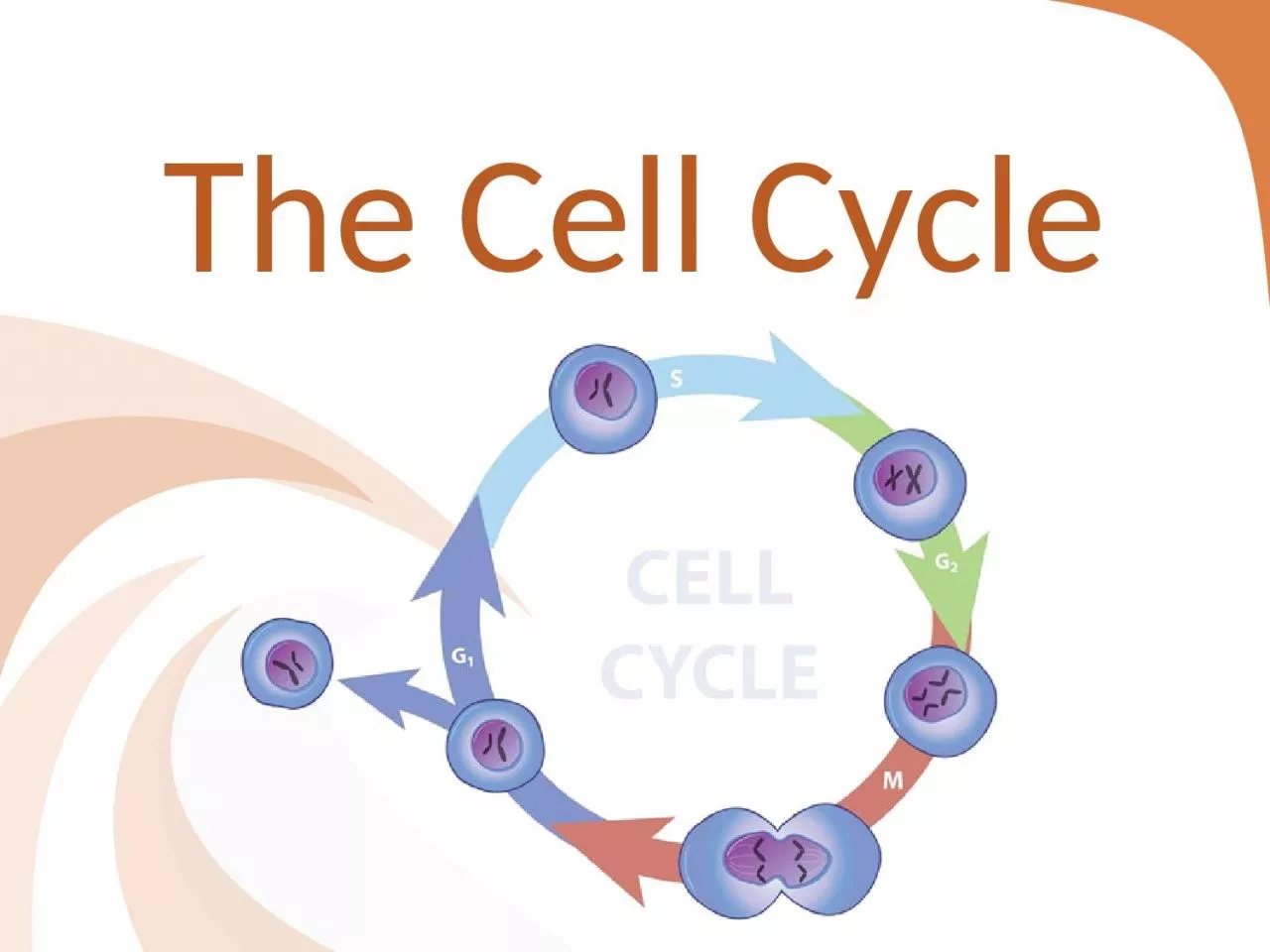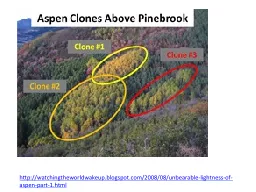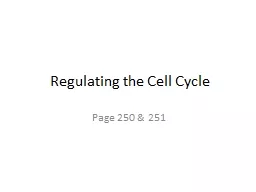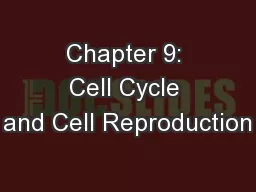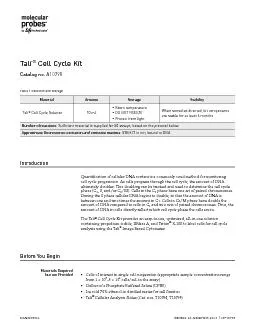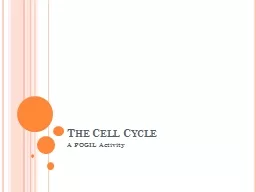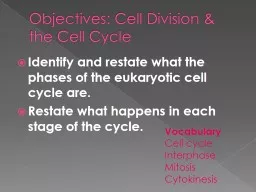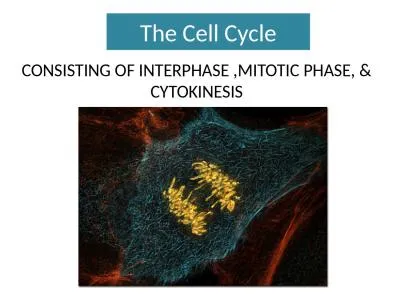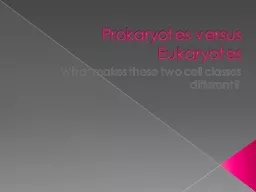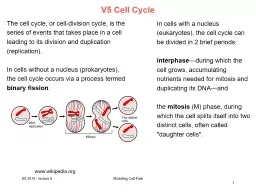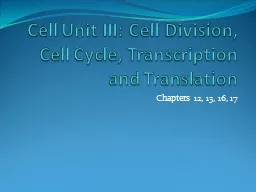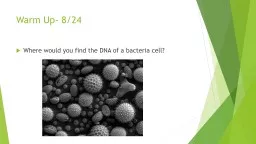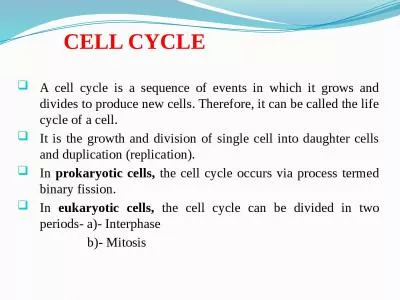PPT-The Cell Cycle The Cell Cycle: Eukaryotes
Author : hazel | Published Date : 2022-06-15
During the cell cycle a cell grows prepares for division and divides to form two identical daughter cells each of which then begins the cycle again The series of
Presentation Embed Code
Download Presentation
Download Presentation The PPT/PDF document "The Cell Cycle The Cell Cycle: Eukaryote..." is the property of its rightful owner. Permission is granted to download and print the materials on this website for personal, non-commercial use only, and to display it on your personal computer provided you do not modify the materials and that you retain all copyright notices contained in the materials. By downloading content from our website, you accept the terms of this agreement.
The Cell Cycle The Cell Cycle: Eukaryotes: Transcript
Download Rules Of Document
"The Cell Cycle The Cell Cycle: Eukaryotes"The content belongs to its owner. You may download and print it for personal use, without modification, and keep all copyright notices. By downloading, you agree to these terms.
Related Documents

